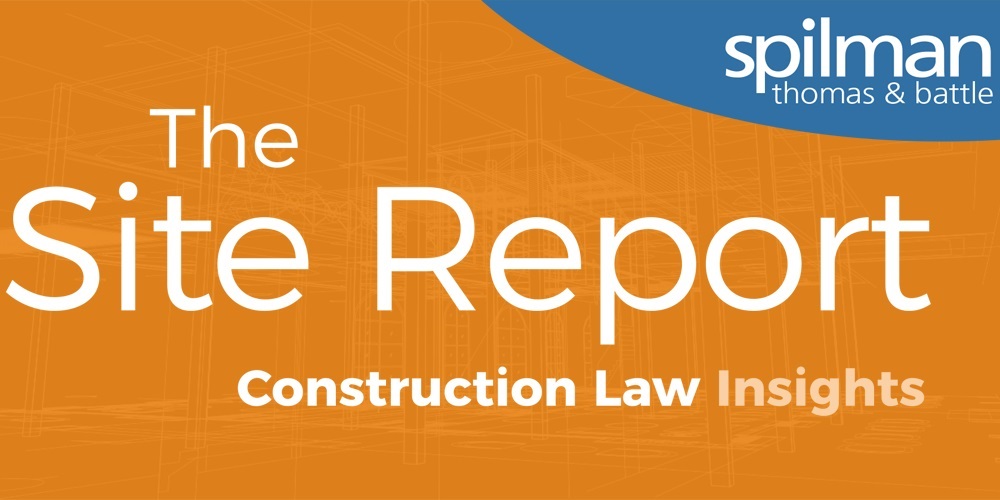Article
Resources
Article
Subcontracting Lessons on Indemnity Provisions, Consistency of Contract Terms and Estoppel From the SC Court of Appeals

The Retreat at Charleston National Country Club Home Owners Ass’n, Inc. v. Winston Carlyle Charleston National, LLC, S.C. App. Case No. 2021-001050, Opinion No. 6099 (Feb. 12, 2025)
Key Takeaways:
- Subcontractors, read and understand indemnity provisions in your subcontract agreements with general contractors.
- General Contractors, ensure that indemnity provisions are likely to be enforceable against subcontractors and do not require subcontractors to indemnify the General Contractor for its own negligence.
- General Contractors, if you use master subcontract agreements, ensure that each subcontractor on a single project is working under the same master subcontract agreement.
- All parties, just because a contract has a severability clause does not mean that a Court reviewing the contract will agree to sever that clause if it is unenforceable to “save the contract.”
- All parties, if you have litigated the same contract issue in a prior case, your claim in a subsequent case may be barred by collateral estoppel.
- All parties, a judgment in a civil action remain final unless and until it is overturned on appeal.
Case Summary (for those of you who want more details):
Eight motions and partial motions for summary judgment in favor of subcontractors were upheld in this recent construction defect case before the South Carolina Court of Appeals.
The case involved the construction of a multi-family development in which Builders FirstSource-Southeast Group (“BFSG”) "provided materials and/or labor, including but not limited to framing, windows, doors, and related components." The dispute arose when the Plaintiffs—The Retreat at Charleston National Country Club Homeowners Association, Inc. and The Retreat at Charleston National Country Club Horizontal Property Regime (collectively, “Plaintiffs”)—claimed that BFSG’s framing and window installation were deficient. These deficiencies allegedly caused water intrusion, leading to significant damage. The Plaintiffs filed a claim against BFSG for the damage, and BFSG sought indemnification from its subcontractors based on two versions of its master subcontract agreements, both containing indemnity provisions.
The Circuit Court ruled in favor of the subcontractors, holding that BFSG's indemnity agreements were unenforceable. In its eight separate orders granting summary judgment or partial summary judgment to various subcontractors, the Circuit Court explained that the indemnity provisions in BFSG's contracts were "inherently confusing" and failed to "clearly and unequivocally provide for indemnity for BFSG's own negligence." The Circuit Court explicitly stated that "the indemnity and duty to defend provisions of the Master Agreement are neither clear nor unequivocal and, thus, fail as a matter of law." Additionally, the Circuit Court found that these provisions violated Section 32-2-10 of the South Carolina Code and public policy by purporting to require subcontractors to indemnify BFSG for its sole negligence. Further, the Circuit Court determined that BFSG's indemnity claims were barred by collateral estoppel since BFSG had previously litigated identical contract provisions in other cases (MI Windows & Doors, Pavic, and Six Fifty-Six Owners' Association), and declined to apply the contracts' severability provisions to save the unenforceable indemnity clauses. BFSG appealed.
The South Carolina Court of Appeals analyzed the two versions of the contracts under the master subcontractor agreement, using the standard set forth in the seminal case Concord and Cumberland. This standard requires that contract clauses seeking to indemnify a party for its own negligence must be clear and unequivocal. While there are no specific factors that a court must weigh when determining whether an indemnity provision is clear and unequivocal, the Court considers several factors: (1) whether the indemnity provision is consistent or contradictory with the agreement as a whole; (2) whether the language leaves no doubt that a subcontractor is being asked to indemnify a contractor for its own negligence; and (3) whether the allocation of liability is unambiguous.
Upon applying these factors to the BFSG dispute, the Court of Appeals found the indemnity provisions to be inherently confusing. Specifically, one version required subcontractors to indemnify BFSG for BFSG’s sole negligence, while simultaneously limiting indemnity to the extent of the subcontractor's own negligence. The second version was similarly problematic, as it included multiple indemnity clauses, including a “disguised” indemnity provision hidden within the warranty language. This version also required subcontractors to indemnify BFSG even in cases where BFSG was alleged to have caused the loss. The Court of Appeals found that these conflicting indemnity provisions could not be reconciled.
The Court of Appeals next examined whether the indemnity provisions violated Section 32-2-10 of the South Carolina Code, which prohibits indemnity agreements for a party’s sole negligence in construction contracts. The Court found that both contracts contained provisions requiring subcontractors to indemnify or defend BFSG for damages resulting from BFSG’s own negligence. Specifically, the Court noted that the later versions of the contracts “purport to require subcontractors to indemnify BFSG for its own negligence in selecting the framing lumber, housewrap, windows, doors, related flashings, and caulk, as well as overseeing and inspecting the installation.”
The Court of Appeals also analyzed whether BFSG was barred from relitigating the enforceability of the indemnity provisions in the later contracts. It found that BFSG had already litigated the enforceability of these provisions in three prior cases involving the same clauses from the same agreements, where judgments had already been rendered. The Court of Appeals rejected BFSG’s argument that pending appeals prevented the application of collateral estoppel, ruling that a judgment remains final unless and until it is overturned on appeal.
The Court of Appeals then considered whether the problematic indemnity provisions could be severed from the contracts. Despite the presence of severability clauses in both contracts, the Court determined that the indemnity provisions were “replete with terms that violate South Carolina law and public policy.” As a result, the provisions could not be effectively severed, and the Court declined to rewrite the agreements to make them enforceable.
Finally, the Court of Appeals analyzed whether the later contracts were unconscionable. It concluded that the contracts were adhesion contracts, marked by a significant disparity in bargaining power and ambiguous terms. The Court found it “inconceivable that a subcontractor with any bargaining power, who understood the implications of the language in these agreements, would have signed them unless there was a total absence of meaningful choice.”
Ultimately, the Court of Appeals upheld the Circuit Court’s decisions to grant motions and partial motions for summary judgment in favor of the subcontractors in relation to the disputed contract provisions.



